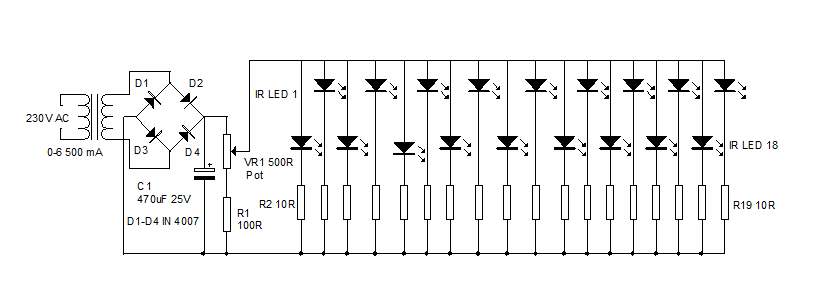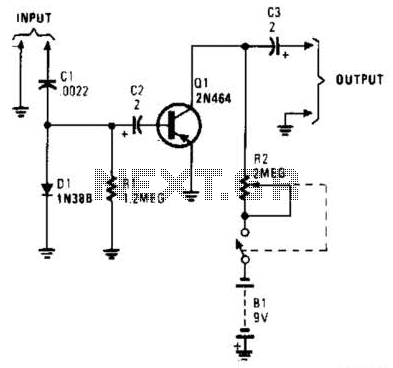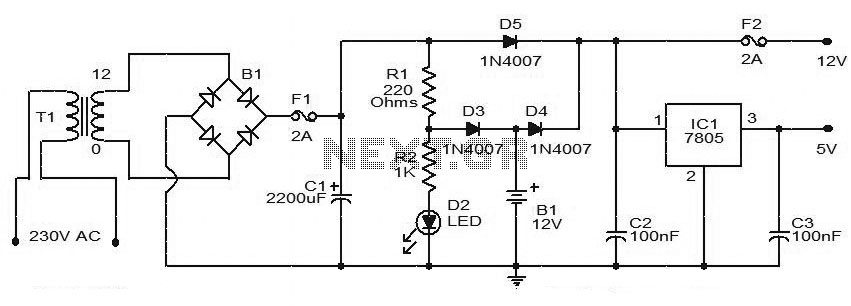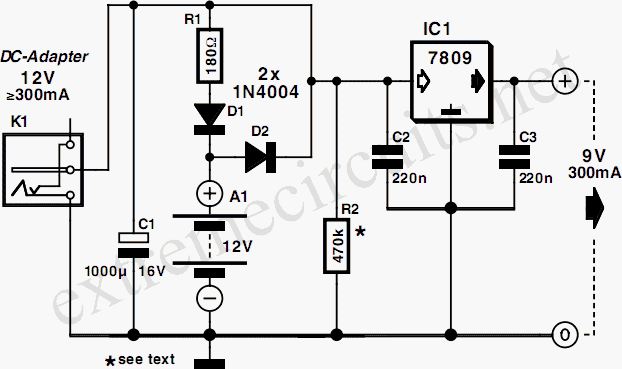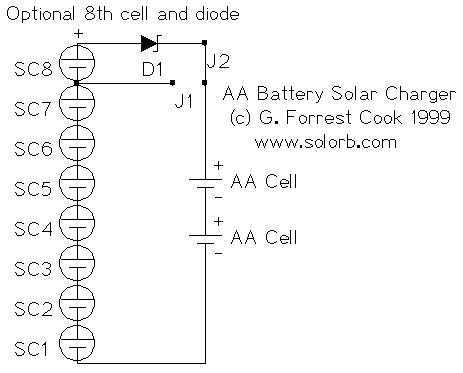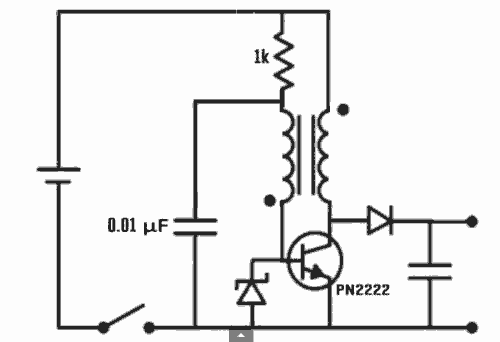
Simple Ni-Cd Battery Charger
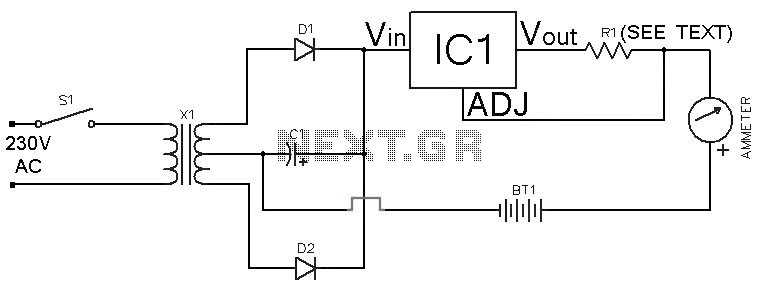
This Ni-Cd battery charger is a circuit utilizing the LM317 regulator IC. The design is straightforward and requires minimal components. By adjusting the value of resistor R1 between 1 ohm and 120 ohms, the charging current can be modified from milliamps to 1.25 A.
The Ni-Cd battery charger circuit employs the LM317 voltage regulator, which is a versatile and widely used component in power supply applications. The LM317 is capable of providing a stable output voltage and can be configured to deliver a specific current for charging purposes. In this design, the charging current is controlled by a variable resistor (R1), allowing for flexibility in charging different capacities of Ni-Cd batteries.
The circuit typically consists of the LM317 IC, a few passive components including R1, and additional resistors and capacitors to stabilize the output and improve performance. The input voltage must be higher than the desired output voltage, which is typically set to around 1.2 V for Ni-Cd batteries. The current flowing through the battery can be adjusted by changing the resistance value of R1, thus allowing the circuit to accommodate various battery sizes and charging requirements.
For optimal performance, it is recommended to include a heat sink for the LM317, as it can generate heat during operation, especially when charging at higher currents. A diode may also be placed in parallel with the battery to prevent reverse current flow when the charger is disconnected.
In summary, this Ni-Cd battery charger circuit is an efficient and adaptable solution for charging Ni-Cd batteries, leveraging the capabilities of the LM317 voltage regulator to provide a controlled charging current through simple component adjustments.This Ni-Cd battery charger is a circuit based on the regulator IC lm317.This circuit is very simple and uses minimum components. By varying value of resistor R1 from 1 ohm to 120 ohms, charging current can be varied from mA to 1.25 A.
Th.. 🔗 External reference
The Ni-Cd battery charger circuit employs the LM317 voltage regulator, which is a versatile and widely used component in power supply applications. The LM317 is capable of providing a stable output voltage and can be configured to deliver a specific current for charging purposes. In this design, the charging current is controlled by a variable resistor (R1), allowing for flexibility in charging different capacities of Ni-Cd batteries.
The circuit typically consists of the LM317 IC, a few passive components including R1, and additional resistors and capacitors to stabilize the output and improve performance. The input voltage must be higher than the desired output voltage, which is typically set to around 1.2 V for Ni-Cd batteries. The current flowing through the battery can be adjusted by changing the resistance value of R1, thus allowing the circuit to accommodate various battery sizes and charging requirements.
For optimal performance, it is recommended to include a heat sink for the LM317, as it can generate heat during operation, especially when charging at higher currents. A diode may also be placed in parallel with the battery to prevent reverse current flow when the charger is disconnected.
In summary, this Ni-Cd battery charger circuit is an efficient and adaptable solution for charging Ni-Cd batteries, leveraging the capabilities of the LM317 voltage regulator to provide a controlled charging current through simple component adjustments.This Ni-Cd battery charger is a circuit based on the regulator IC lm317.This circuit is very simple and uses minimum components. By varying value of resistor R1 from 1 ohm to 120 ohms, charging current can be varied from mA to 1.25 A.
Th.. 🔗 External reference
